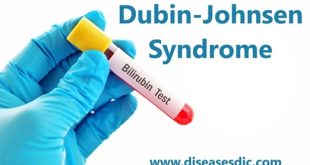What is Dressler syndrome?
Dressler syndrome is a type of pericarditis, which is the inflammation of the sac around the heart (pericardium). It’s also called post-pericardiotomy syndrome, post-myocardial infarction syndrome, or post-cardiac injury syndrome. This is because the condition typically occurs after a heart surgery, myocardial infarction (heart attack), or injury. Dressler syndrome is thought to occur when the immune system responds excessively following one of these events.
If left untreated, inflammation of the pericardium can lead to scarring, thickening, and muscle tightening of the heart, which can be life-threatening. Treatment for Dressler syndrome includes taking high doses of aspirin or other anti-inflammatory medications. Fortunately, the condition is now considered very rare due to the development of modern treatments for heart attacks.
Pathophysiology
The exact cause of DS is unknown, though it is thought to be immune-mediated. Antimyocardial antibodies have been shown to be elevated in the blood of patients with DS, but it is unclear whether these antibodies are the cause or occur as a result of the syndrome. These antimyocardial antibodies are thought to target antigens that have become exposed through damage to the pericardium.
Viruses that have been associated with DS include
- Coxsackie B
- Adenovirus
- Cytomegalovirus
The patients present with elevated levels of viral components
What causes Dressler syndrome?
The exact cause of Dressler syndrome isn’t clear. It’s believed to occur when a heart surgery or heart attack triggers an immune response in the pericardium. In response to an injury, the body typically sends immune cells and antibodies to help repair the area. However, an immune response can sometimes cause an excessive amount of inflammation.
Some of the events that have been known to trigger Dressler syndrome include:
Heart surgery, such as open-heart surgery or coronary artery bypass surgery
- Percutaneous coronary intervention, also known as coronary angioplasty and stent placement
- Implantation of a pacemaker
- Cardiac ablation
- Pulmonary vein isolation
- Penetrating trauma to the chest
Risk Factors
- The risk of Dressler’s syndrome increases with the size of the infarction.
- Further, a former episode of Dressler’s syndrome increases the risk of relapse upon recurrent MI (the most important risk factor).
Epidemiological studies showed a higher risk ratio of Dressler’s syndrome with:
- Cardiac surgeries associated with greater myocardial damage as aortic valve replacement
- Younger age
- Prior treatment with prednisone
- B-negative blood type
- Halothane anesthesia
Viral infections that have been associated with Dressler’s syndrome (based on the seasonal variations in incidence and elevated blood levels of viral components in Dressler’s Syndrome patients), including:
- Coxsackie B virus
- Adenovirus
- Cytomegalovirus
What are the symptoms of Dressler Syndrome?
Various symptoms are associated with the syndrome. They may include
- Fatigue
- Weakness
- Fever
- Chest pain (worse with breathing or lying down, can be felt in the chest, upper back or left shoulder, can be made worse by activity)
- Difficult or labored breathing (dyspnea). It may be more difficult to breathe when reclining or lying down.
- Rapid heartbeat (tachycardia) or heart palpitations
- Pericardial effusion (fluid buildup between pericardium and the heart itself)
Rarely, symptoms can be life-threatening, so it is important to seek medical attention and treatment if you experience chest pain and have trouble breathing, especially if you have had a recent admission for heart attack (myocardial infarction), heart surgery, heart procedure, or chest trauma due to an accident or injury.
Complications
The immune system reaction that causes Dressler syndrome might also lead to fluid buildup in the tissues surrounding your lungs (pleural effusion).
Rarely, Dressler syndrome can cause more-serious complications, including:
- Cardiac tamponade. Inflammation of the pericardium can cause fluids to accumulate in the sac (pericardial effusion). The fluid can put pressure on the heart, forcing it to work harder and reducing its ability to pump blood efficiently.
- Constrictive pericarditis. Recurring or chronic inflammation can cause the pericardium to become thick or scarred. The scarring can reduce the heart’s ability to pump blood efficiently.
Dressler’s syndrome diagnosis
Your doctor will conduct a thorough physical examination, including listening to your heart with a stethoscope. Certain characteristic sounds can indicate that your pericardium is inflamed or that fluid has accumulated around your heart.
Your doctor might then recommend tests, such as:
Echocardiogram. Sound waves produce an image of your heart, helping your doctor to see if fluid is collecting around it.
Electrocardiogram. Electrical impulses in your heart are recorded through wires attached to your skin. Certain changes in the electrical impulses can indicate pressure on your heart. But electrocardiogram readings may be abnormal after heart surgery, so your doctor likely won’t rely on this one test for a diagnosis of Dressler’s syndrome.
Chest X-ray. An X-ray can help detect fluid building up around the heart or lungs and can help exclude other causes of your symptoms, such as pneumonia.
Cardiac magnetic resonance imaging (MRI). A cardiac MRI uses sound waves to create still or moving pictures of how blood flows through the heart. This test can show thickening of the pericardium.
Complete blood count. Most people with Dressler syndrome have an increased white blood cell (WBC) count.
Blood tests to measure inflammation. A higher than normal level of C-reactive protein and an increased erythrocyte sedimentation rate (sed rate) can indicate inflammation that’s consistent with Dressler syndrome.
How is dressler syndrome treated?
Dressler’s syndrome may be treated with medications. Anti-inflammatory drugs can reduce the pain and inflammation associated with pericarditis. The main treatment is usually either aspirin or other non-steroidal anti-inflammatory drugs (NSAIDs) such as ibuprofen or naproxen. Two commonly used dosing schedules are:
- High-dose aspirin, 750 mg to 1,000 mg every six to eight hours. The dosage is reduced every week as the symptoms of pericarditis lessen. Total treatment times is typically three to four weeks.
- Ibuprofen, 600 to 800 mg every six to eight hours. The dosage is reduced every week as the symptoms of pericarditis lessen. Total treatment times is typically three to four weeks.
Other medications that are sometimes tried include colchicine and steroids (especially for patients who cannot tolerate aspirin or NSAIDs or whose symptoms have not responded to them.).
Surgery might be necessary if complications develop or the patient does not respond to medication. One surgical procedure called pericardiocentesis drains fluid from the pericardium.
Prevention of dressler syndrome
Some preliminary studies suggest that taking the anti-inflammatory medication colchicine before heart surgery might help prevent Dressler syndrome.
 Diseases Treatments Dictionary This is complete solution to read all diseases treatments Which covers Prevention, Causes, Symptoms, Medical Terms, Drugs, Prescription, Natural Remedies with cures and Treatments. Most of the common diseases were listed in names, split with categories.
Diseases Treatments Dictionary This is complete solution to read all diseases treatments Which covers Prevention, Causes, Symptoms, Medical Terms, Drugs, Prescription, Natural Remedies with cures and Treatments. Most of the common diseases were listed in names, split with categories.







